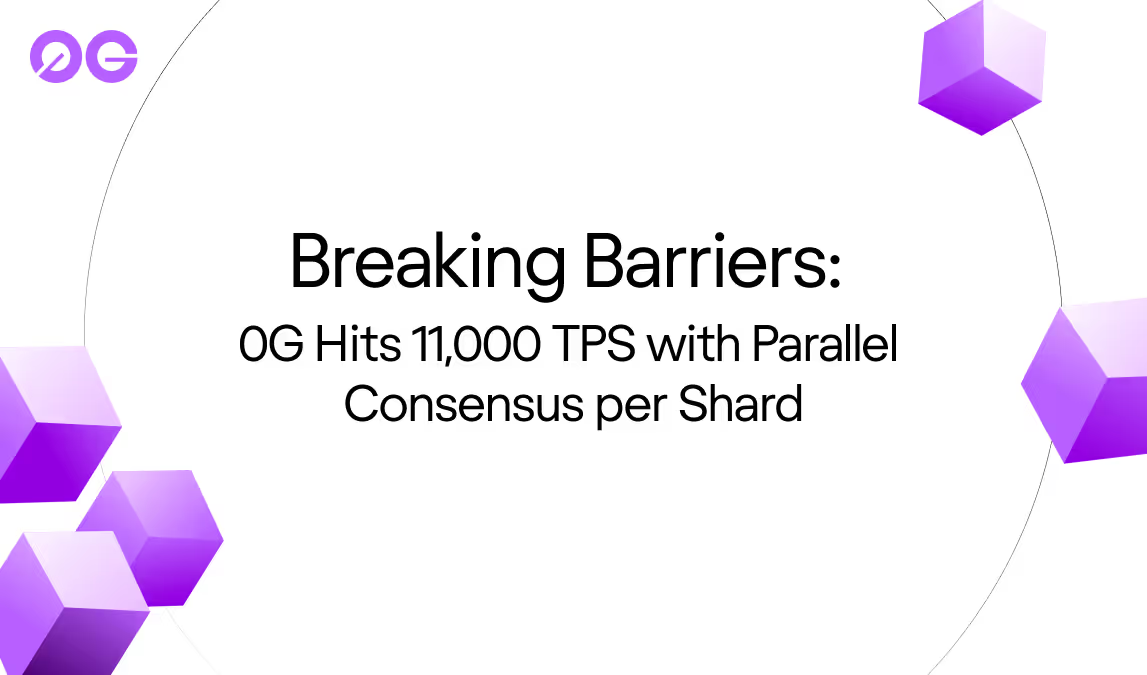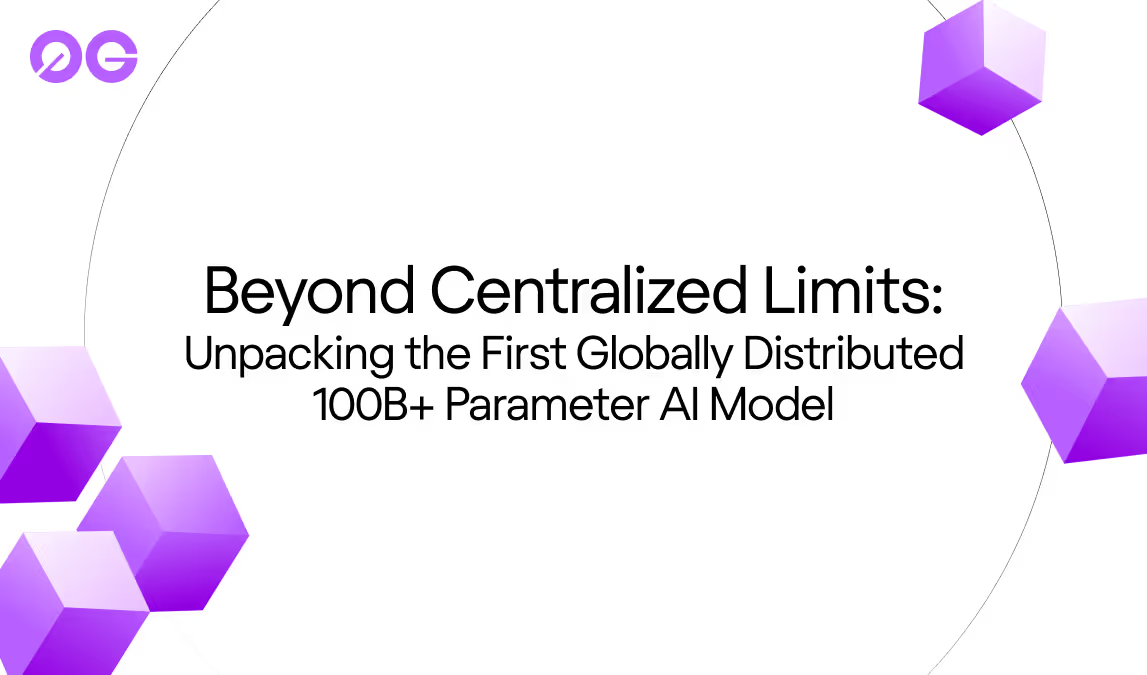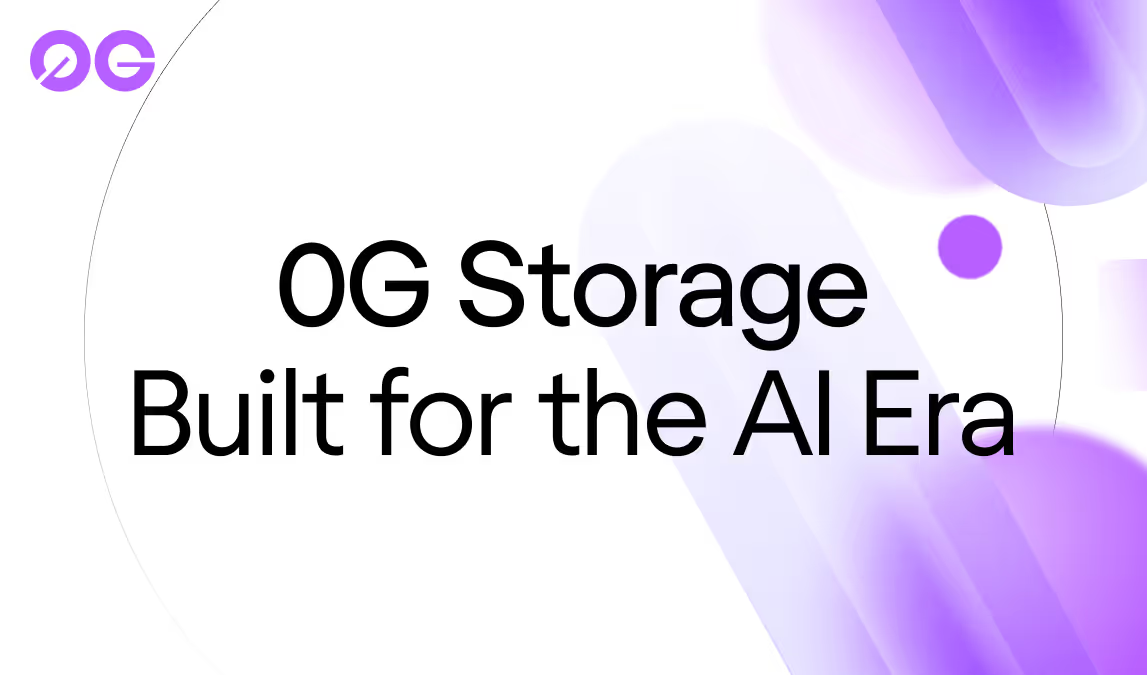

Benchmarking 0G Performance
0G is the largest AI Layer 1 ecosystem, powered by the fastest DeAIOS, and is bringing AI fully on-chain.
High performance is crucial for 0G to seamlessly bring AI on-chain, which entails managing complex models and large datasets with minimal latency. We performed testing across three transaction types, against Berachain, Evmos, Kava, and Sei, which all represent highly performant networks that also use the Cosmos SDK.
This testing is important as 0G is still in its V1 architecture phase, with an upcoming transition to V2 that will further enhance performance. This means that preliminary results reflect 0G’s performance in its early days, against top-tier networks that have existed for much longer.
Key takeaways from our testing include:
- Performance Across Testing Categories: 0G demonstrated competitive results for simple transactions, but underperformed slightly for ERC-20 transactions and Uniswap transactions.
- V1 Context and Future Potential: These results reflect 0G’s early-stage V1 architecture, built on the now-discontinued Ethermint framework. Despite this, the network demonstrates strong foundational performance and significant promise for further growth.
- V2 Upgrades to Redefine Performance: Upcoming V2 enhancements, including a dual-chain architecture and dynamic multi-chain scaling, will position 0G as a high-performance, future-proof network capable of surpassing leading chains in throughput and scalability.
We have also published the benchmarking results here on Github.
Benchmarking Overview
Benchmarking is essential to evaluate 0G’s current performance of its V1 architecture and identify areas for improvement. V1 represents the first iteration of 0G Chain, built to demonstrate core functionality while tackling the unique demands of decentralized applications. With significant upgrades planned for 0G’s V2, it’s crucial first to establish a baseline for how V1 performs compared to leading networks.
We tested against other leading EVM-compatible networks, including Berachain, Evmos, Kava, and Sei, with results measured in Transactions Per Second (TPS). This research was designed to provide a transparent view of 0G’s current capabilities while identifying opportunities for improvement as we transition from V1 to V2.
During our testing, we focused on three distinct categories of transactions:
- Simple Transactions: Measures the ability to process basic account-to-account transactions, such as transferring native tokens. Good for reflecting baseline throughput and efficiency.
- ERC20 Transactions: Evaluates performance with ERC20 token standards, meaning Ethereum-based transactions.
- Uniswap Transactions: As a transaction on a DEX like Uniswap is more complex than a simple token transfer, this illustrates each blockchain’s speed at executing complex smart contract interactions, such as a common blockchain transaction.
By testing across all three transaction types, we can see how each network performs in different scenarios.
Networks: Berachain, Kava, Evmos, Sei
We decided to test 0G’s performance against four networks:
- Berachain
- Evmos
- Kava
- Sei
0G, Evmos, and Kava all use Cosmos and Ethermint, where each Ethereum transaction is wrapped into a Cosmos transaction for consensus processing. Meanwhile, Berachain uses a Cosmos+Beacon API+Geth/Reth design. This approach wraps entire Ethereum block payloads into single Cosmos transactions for consensus processing.
The approach taken by 0G, Evmos, and Kava introduces additional consensus overhead, resulting in slightly lower TPS compared to Berachain. By processing block-level payloads rather than transaction-level ones, Berachain significantly reduces consensus overhead, yielding consistently higher TPS across all categories, reflected in the results below.
Although Sei's extensive modifications to Cosmos, Tendermint, and Go-Ethereum make its architecture fundamentally different, we included Sei here for completeness.
RESULTS
The results can be seen as follows:

The benchmarking results reveal that for Simple transactions, it was comparable to all other networks. However, the results indicate mixed performance in other categories:
- Simple Transactions: 0G outperformed Kava and delivered results on par with other established networks like Bera, Evmos, and Sei. This highlights its strong foundational performance for processing basic transactions efficiently.
- ERC-20 Transactions: While 0G outperformed Kava, it underperformed compared to Bera, Evmos, and Sei. This suggests there is room for optimization in handling token transactions under the widely adopted ERC-20 standard.
- Uniswap Transactions: 0G showed lower performance in this category, reflecting a need for enhancements to handle better the computational demands of decentralized exchange (DEX) operations.
At a technical level, there are explanations for these differences.
For instance, Berachain's advantage is that they leverage a block-level payload architecture. This means that instead of processing transactions one by one, Berachain processes entire blocks of transactions at once. This reduces overhead and improves efficiency, resulting in higher transaction throughput.
This architecture inspired our V2 upgrades. For context, 0G’s V1 was built on Ethermint, which has limitations due to its discontinued development. Current architecture introduces some overhead, impacting TPS relative to simpler chains.
Transitioning to V2: A Transformative Leap
It's important to note that despite 0G’s strong performance and recent growth, it is a significantly newer network compared to these other chains. And the results reflect the network's V1 state, which is built on Ethermint, a framework that has since been discontinued. Despite this, 0G demonstrates competitive performance, especially in Simple TPS, showing promise for further optimization and scalability.
With V2, arriving later in 2025, 0G will adopt a new architecture inspired by Ethereum 2.0.
In our upcoming V2 release, we will adopt a block-level payload approach inspired by Berachain’s architecture, significantly reducing consensus overhead and boosting efficiency. Additionally, we will optimize block finality times to enable faster transaction confirmations while maintaining high TPS. To further refine performance, we will conduct extensive benchmarking to balance block size, latency, and gas fees, ensuring an ideal tradeoff that enhances both user experience and network scalability.
There are two other major changes that will enhance performance:
- Switching to a dual-chain paradigm
0G V2 will adopt a dual-chain paradigm inspired by Ethereum 2.0, where a beacon chain (which handles consensus) works alongside an execution chain (which processes transactions). This separation optimizes performance, enabling faster and more efficient transaction processing while allowing 0G to move beyond the discontinued Ethermint framework.
- Multi-chain scaling
0G's V2 architecture introduces horizontal scalability, enabling the addition of new, independent consensus networks as demand grows. This approach ensures that 0G can dynamically expand to handle increasing transaction and data volumes while maintaining high performance and throughput.
A key part of this is shared staking, where validators stake funds on the Ethereum mainnet to provide security across all 0G Consensus networks they participate in. If a slashable event occurs on any network, the validator's mainnet stake is penalized, extending Ethereum-level security to all of 0G's networks simultaneously. This mechanism eliminates the need for validators to stake additional assets for each new network, making it easier to scale securely.
What’s Next for 0G?
0G had many significant accomplishments in 2024, including new products such as:
- Node Sale Success: Over 83,000 nodes sold across 6,000+ unique wallets.
- Game-Changing Product Launches: Launched 0G Service Marketplace, 0G Compute Network, and 0G Serving.
- Major Fundraising: $325M raised.
- Expanding Our Ecosystem: 155+ partners across all Web3 verticals.
- Global Presence: Participating in over 100 events and hosting 3 hackathons to inspire innovation.
Heading into 2025, one of our key focuses is to further improve our performance, for which our V2 upgrades will be a core aspect. We also have exciting product launches, such as our Agent Network, and we’ll be sharing details on it shortly.






